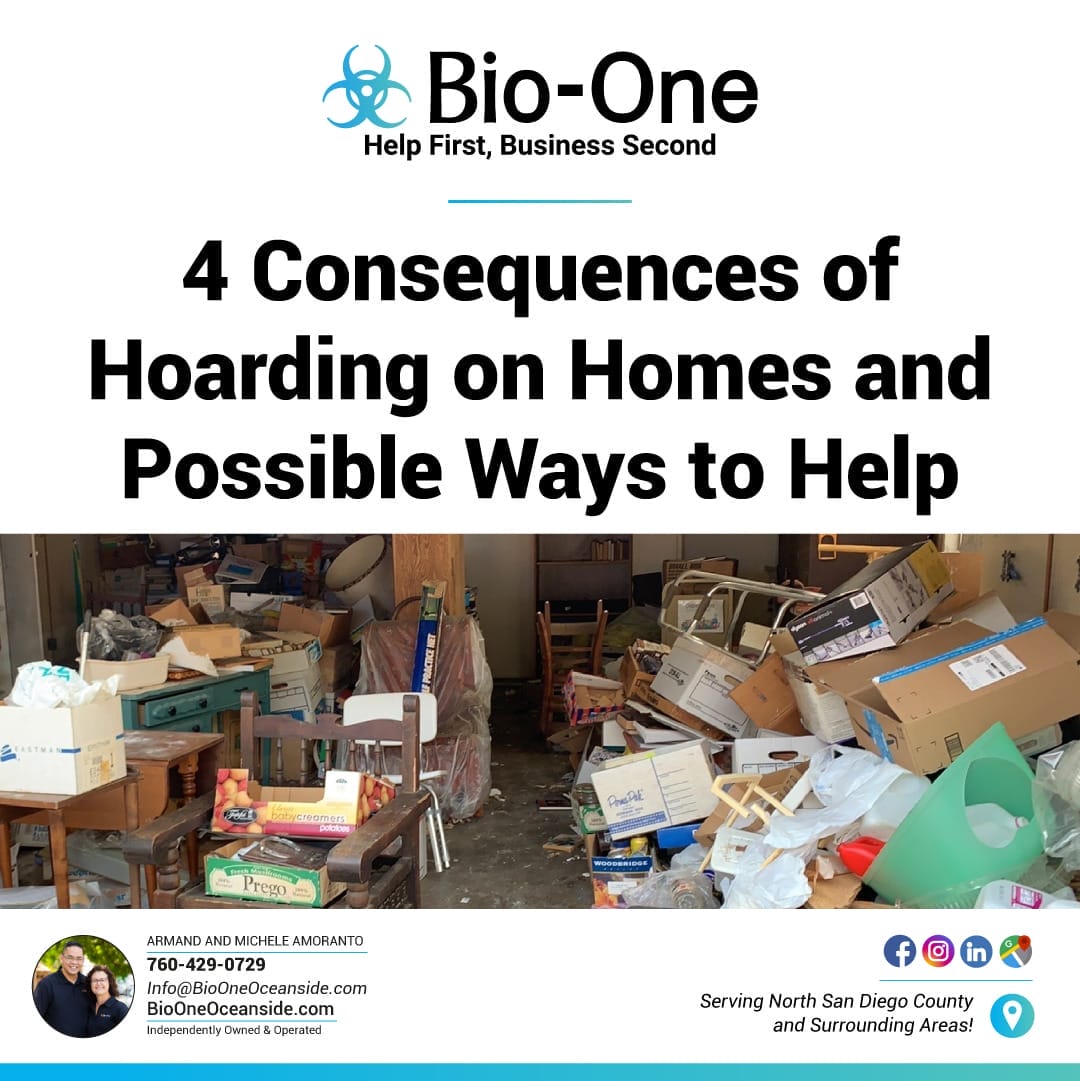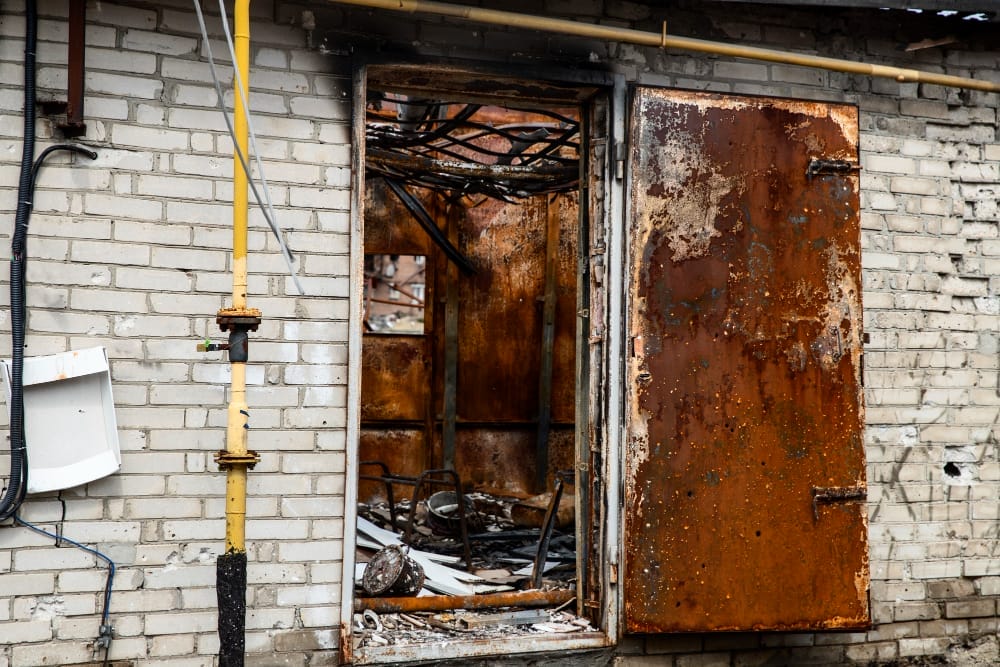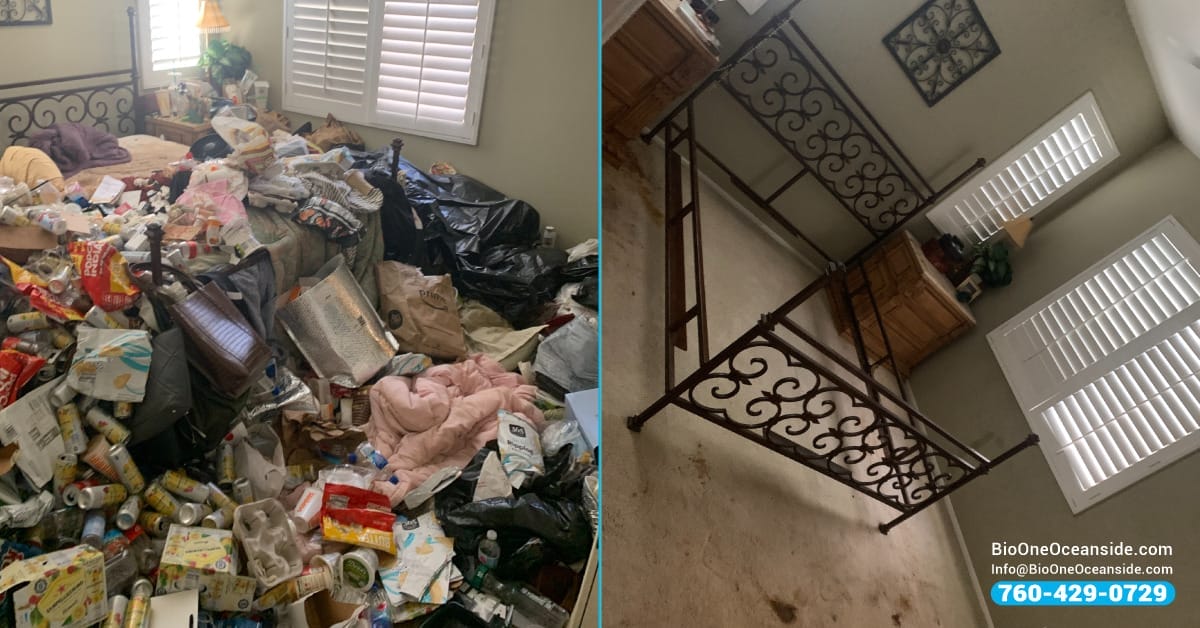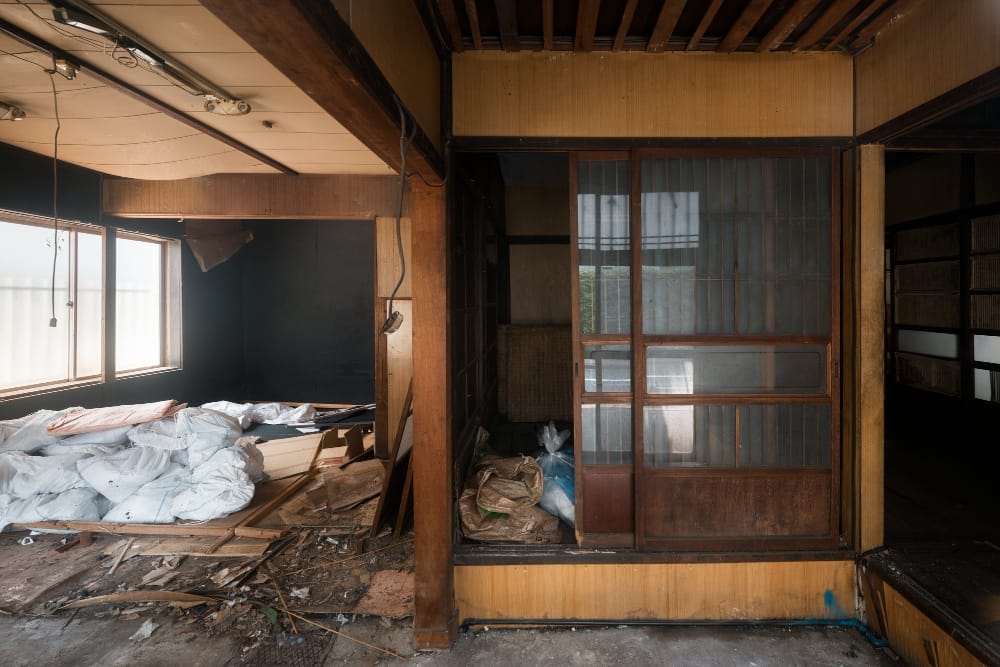
Hoarding, a mental disorder, is characterized by the persistent difficulty of discarding or parting with possessions, regardless of their actual value. This behavior can often result in the accumulation of an overwhelming amount of clutter in one's living space, causing serious problems for both the individual and their loved ones. Unfortunately, hoarding can also lead to several hazardous conditions in the home, such as fire hazards, falls, mold growth, squalor, pest infestations, and more. In this article, we'll delve into the four consequences of hoarding on homes and provide tips on how to remediate them.

Fire Hazards
Formed by stockpiles of clutter blocking exits or heating equipment, fire hazards can also arise due to electrical wiring becoming excessively overloaded As outlets and wiring are covered and hidden by hoarded items, electrical fires are common. In addition to keeping exit routes clear, it is also essential to have working smoke alarms throughout the home.

Mold Growth
Excess moisture can get trapped in hoarded items, leading to mold development. Mold exposure can cause allergies, respiratory issues, and other health problems. Additionally, as the home is not cleaned regularly, chances are that mold spores spread through all the areas of the home, which may result in severe mold infestations. To prevent mold growth, it is crucial to regularly clean and declutter the home, especially in areas prone to moisture.
Falls and Tripping Hazards
Tripping hazards are a common cause of falls in hoarded homes. High piles of clutter, lack of a clear path, or obstructed stairways can all lead to serious injuries. There comes a point where clutter becomes unmanageable and can be hazardous, especially for older adults or those with mobility issues.

The first step in assessing a hoarded home is to remove any potential tripping hazards. This may involve clearing pathways, removing clutter, and fixing any loose or broken flooring. It's also important to ensure that all stairways are clear and well-lit.
Pests and Rodent Infestations
Hoarding provides ideal conditions for pests and rodents to thrive. Clutter creates hiding spots, food sources, and nesting grounds for these unwanted guests. Pests and rodents can carry diseases, cause property damage, and worsen existing health conditions.
In a hoarded home, rodents can spread through crawl spaces, vents, and cracks in the walls. It's crucial to address any potential entry points and regularly clean and declutter to prevent pest infestations.
Restoring a Hoarded Home Can Bring Unexpected Challenges
The consequences of hoarding are not just in the physical and mental health aspect. Over time, clutter and neglect can cause structural damage to a home, making it unsafe for inhabitants. The weight of piles of clutter can weaken floors and walls, causing them to sag or even collapse. Hoarded items can also block ventilation systems and cause mold growth, which can further contribute to the deterioration of a property.

Additionally, hoarding often leads to neglect and lack of maintenance in a home. This can result in plumbing issues, electrical problems, and other household hazards. These issues not only make the living conditions unsafe but also decrease the value of the property.
Seeking Professional Help for Hoarding
Hoarding Disorder requires specialized treatment. Some possible options for treating hoarding include therapy, medication, and support groups.

Cognitive-behavioral therapy (CBT) is effective in helping individuals with Hoarding Disorder. This type of therapy helps individuals understand the thoughts and behaviors driving their hoarding tendencies and teaches them healthy coping mechanisms to manage their symptoms.
Medications such as selective serotonin reuptake inhibitors (SSRIs) may also be prescribed in conjunction with therapy to help alleviate symptoms of anxiety and depression often associated with Hoarding Disorder.
Support groups, such as those offered by organizations like the International OCD Foundation, can provide a sense of community and understanding for those struggling with Hoarding Disorder. These groups offer a safe space for individuals to share their experiences and learn from others going through similar challenges.
Disclaimer: The information provided in this blog post is intended to be educational and should not be considered professional medical advice. We are not mental health professionals. While we strive to provide accurate and up-to-date information about treatment options for Hoarding Disorder, we strongly recommend that individuals seeking help for hoarding or any other mental health concerns consult with a qualified mental health professional.
Bio-One of Oceanside Can Restore Hoarded Homes
Hoarding can have dangerous consequences for a home. In addition to the hazards outlined above, hoarders can also develop lifestyle and emotional problems. However, with the right mindset and the right tools, it's possible to tackle hoarding and mitigate the danger it poses to living spaces.
In extreme cases where hoarding presents an immediate health risk, consider contacting professionals like our team at Bio-One of Oceanside. We specialize in hazardous waste disposal, complete cleaning, and restoration of hoarded homes. Don't hesitate to contact us if you or a loved one is struggling with hoarding.


